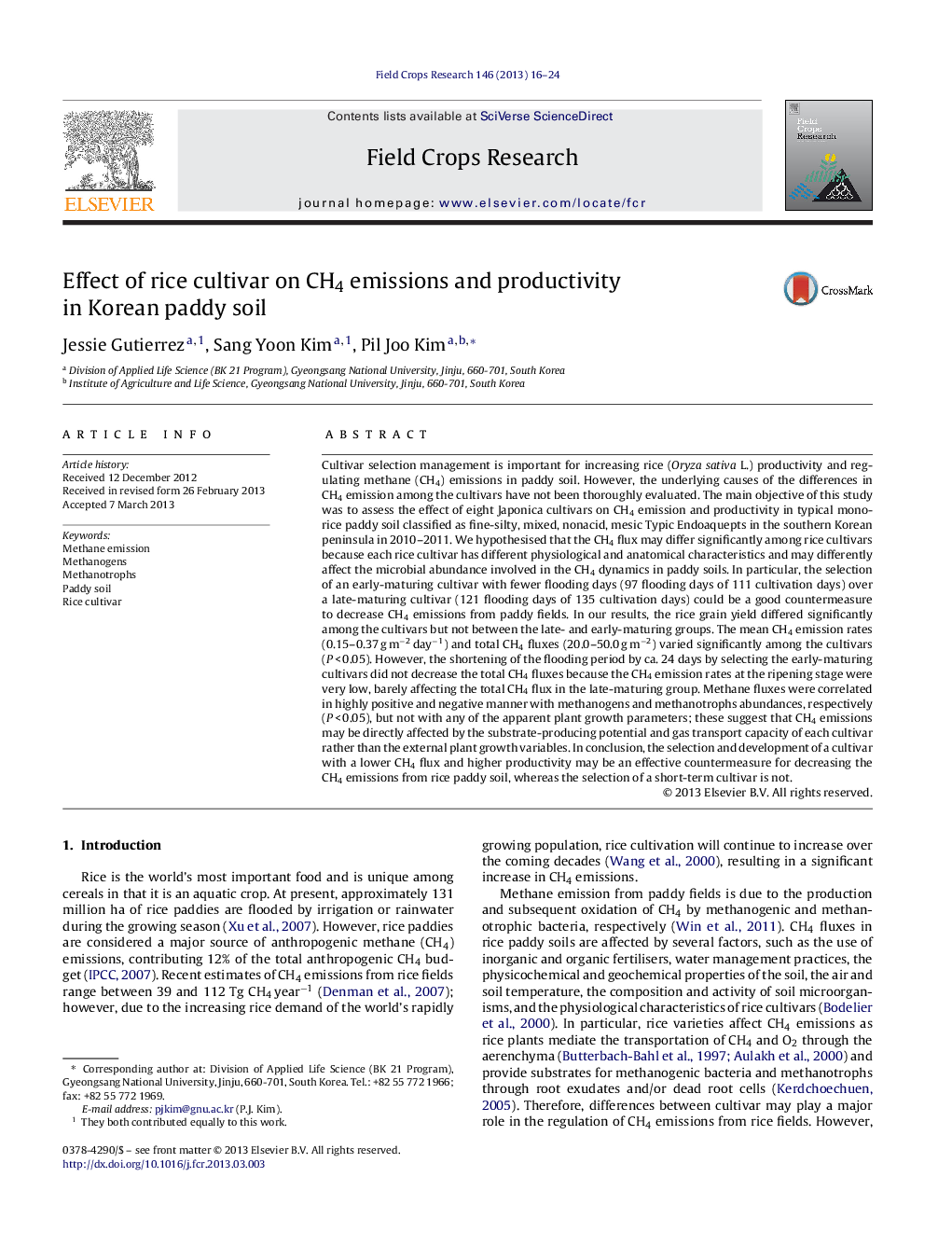| کد مقاله | کد نشریه | سال انتشار | مقاله انگلیسی | نسخه تمام متن |
|---|---|---|---|---|
| 6375211 | 1624717 | 2013 | 9 صفحه PDF | دانلود رایگان |
عنوان انگلیسی مقاله ISI
Effect of rice cultivar on CH4 emissions and productivity in Korean paddy soil
دانلود مقاله + سفارش ترجمه
دانلود مقاله ISI انگلیسی
رایگان برای ایرانیان
کلمات کلیدی
موضوعات مرتبط
علوم زیستی و بیوفناوری
علوم کشاورزی و بیولوژیک
علوم زراعت و اصلاح نباتات
پیش نمایش صفحه اول مقاله

چکیده انگلیسی
Cultivar selection management is important for increasing rice (Oryza sativa L.) productivity and regulating methane (CH4) emissions in paddy soil. However, the underlying causes of the differences in CH4 emission among the cultivars have not been thoroughly evaluated. The main objective of this study was to assess the effect of eight Japonica cultivars on CH4 emission and productivity in typical mono-rice paddy soil classified as fine-silty, mixed, nonacid, mesic Typic Endoaquepts in the southern Korean peninsula in 2010-2011. We hypothesised that the CH4 flux may differ significantly among rice cultivars because each rice cultivar has different physiological and anatomical characteristics and may differently affect the microbial abundance involved in the CH4 dynamics in paddy soils. In particular, the selection of an early-maturing cultivar with fewer flooding days (97 flooding days of 111 cultivation days) over a late-maturing cultivar (121 flooding days of 135 cultivation days) could be a good countermeasure to decrease CH4 emissions from paddy fields. In our results, the rice grain yield differed significantly among the cultivars but not between the late- and early-maturing groups. The mean CH4 emission rates (0.15-0.37 g mâ2 dayâ1) and total CH4 fluxes (20.0-50.0 g mâ2) varied significantly among the cultivars (P < 0.05). However, the shortening of the flooding period by ca. 24 days by selecting the early-maturing cultivars did not decrease the total CH4 fluxes because the CH4 emission rates at the ripening stage were very low, barely affecting the total CH4 flux in the late-maturing group. Methane fluxes were correlated in highly positive and negative manner with methanogens and methanotrophs abundances, respectively (P < 0.05), but not with any of the apparent plant growth parameters; these suggest that CH4 emissions may be directly affected by the substrate-producing potential and gas transport capacity of each cultivar rather than the external plant growth variables. In conclusion, the selection and development of a cultivar with a lower CH4 flux and higher productivity may be an effective countermeasure for decreasing the CH4 emissions from rice paddy soil, whereas the selection of a short-term cultivar is not.
ناشر
Database: Elsevier - ScienceDirect (ساینس دایرکت)
Journal: Field Crops Research - Volume 146, May 2013, Pages 16-24
Journal: Field Crops Research - Volume 146, May 2013, Pages 16-24
نویسندگان
Jessie Gutierrez, Sang Yoon Kim, Pil Joo Kim,